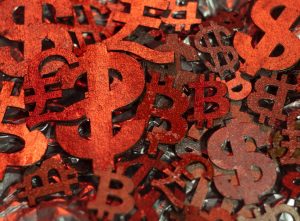Candlestick charts are one of the most commonly used methods of technical analysis in forex trading. Candlesticks are a type of price chart that displays the open, high, low, and closing prices of an asset for a given period. They are used to identify trends and patterns in the market and provide traders with valuable insights into the direction of a currency pair’s price movements.
The candlestick chart was first developed in Japan in the 17th century, where it was used to track the price movements of rice futures. The method was later adopted by traders in the United States and Europe, and it is now widely used by forex traders around the world.
Each candlestick on a forex chart represents a specific amount of time, such as one hour, one day, or one week. The body of the candlestick represents the opening and closing prices of the asset over that time period, while the wicks or shadows represent the high and low prices.
The color of the candlestick is determined by whether the closing price was higher or lower than the opening price. If the closing price is higher than the opening price, the candlestick is typically green or white. If the closing price is lower than the opening price, the candlestick is typically red or black.
The shape and size of the candlestick can also provide valuable information to traders. For example, a long green candlestick with a small upper wick and no lower wick indicates that the bulls were in control throughout the trading session and that the price closed near its high for the period. A long red candlestick with a small lower wick and no upper wick, on the other hand, indicates that the bears were in control and that the price closed near its low for the period.
Candlestick patterns are formed when multiple candlesticks are grouped together in a specific way. There are dozens of different candlestick patterns that forex traders use to identify potential buy and sell signals. Some of the most commonly used patterns include doji, hammer, shooting star, and engulfing.
The doji pattern occurs when the opening and closing prices are equal, resulting in a candlestick with a small body and long wicks. This pattern is often interpreted as a sign of indecision in the market, as neither the bulls nor the bears were able to gain control.
The hammer pattern is formed when a long lower wick is present, with a small body and no upper wick. This pattern is often seen as a bullish signal, as it indicates that the bears attempted to push the price down but were ultimately unsuccessful.
The shooting star pattern is the opposite of the hammer, with a long upper wick, a small body, and no lower wick. This pattern is often interpreted as a bearish signal, as it indicates that the bulls attempted to push the price up but were ultimately unsuccessful.
The engulfing pattern is formed when a smaller candlestick is completely engulfed by a larger candlestick in the opposite direction. This pattern is often seen as a strong buy or sell signal, as it indicates that the market has shifted in one direction with a great deal of momentum.
In conclusion, the candlestick chart is a powerful tool for forex traders looking to analyze market trends and identify potential buy and sell signals. By understanding the different types of candlestick patterns and what they represent, traders are able to make more informed trading decisions and increase their chances of success in the volatile forex market.






